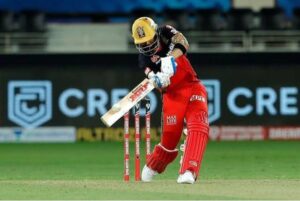cricket, the term “cross batting” is often used to refer to a batting technique. where the batsman plays shots across the line of the ball. typically aiming to hit the ball towards the leg side of the field. This includes shots like the hook shot, pull shot, and cut shot, as you mentioned.
Hook shot as cross batting tactic
Hook shot is cross batting technique where, the batsman hits a short-pitched delivery. Generally bowled at or above chest height, towards the leg side. The pull shot is similar but is play to a ball that is not as short. Typically around waist height. Both these shots involve the batsman swiveling on the back foot. And using a horizontal bat swing to hit the ball towards the leg side.
Cut shot as cross batting tactic in cricket
The cut shot, on the other hand, is play to a ball that is outside off stump (towards the off side of the field). The batsman uses a horizontal bat swing and aims to hit the ball downward. Directing it towards the off side of the field.

cross batting in cricket
It’s important to note that playing cross-bat shots carries a certain level of risk. Because the ball is being played across the line. If the ball deviates or bounces unexpectedly. It can result in a mistimed shot or even a dismissal. Batsmen need to have good timing and technique to execute these shots effectively.
Origination of cross batting
Regarding the origin of cross batting, it is difficult to pinpoint an exact date or time. when it first originated in cricket. However, the batter uses this word in the game of cricket for long time track back to the history. To counter certain types of deliveries or to score runs in specific areas of the field.
As for cross bowling, the term is not commonly use in cricket terminology. “Cross-batted” or “across the line” are phrases more commonly mingle with batting techniques. Cross bowling, if use, would likely refer to a delivery that is bowled across the batsman, rather than in the conventional line towards the stumps. However, it’s worth noting that the term is not widely use or recognize in cricket jargon. In cricket, shots can indeed be categorize as vertical or straight-bat shots and horizontal or cross-bat shots. based on the orientation of the bat swing.
Vertical batting shots
Vertical or straight-bat shots involve the batsman swinging the bat in a vertical plane. while making contact with the ball. Cross bat in cricket shots are typically play to hit the ball along the ground. And are often used for shots played in the direction of the ball’s original trajectory. Examples of vertical shots include the drive, leg glance, and defensive shots.
Horizontal/cross batting shots
On the other hand, horizontal or cross-bat shots involve the batsman swinging the bat in a horizontal plane. Perpendicular to the line of the ball. These shots are typically play to hit the ball across the ground. or into the air, often towards the leg side or off side of the field. Examples of cross-bat shots include the pull shot, cut shot, and sweep shots.
vertical batting vs cross batting shots
The distinction between vertical and horizontal shots is based on the plane in which the bat swing occurs. It helps categorize different types of shots based on the direction and intent of the batsman’s stroke. Yes, in cricket, batsmen employ various tactics and styles to score runs. while also aiming to preserve their wickets. The objective is to accumulate as many runs as possible while avoiding getting dismissed.
how batter uses improvisations
Batsmen utilize a range of shots to score runs, and they have the freedom to hit the ball in any direction on the field. The primary goal is to find gaps in the field and score runs while running between the wickets. However, batsmen can also hit the ball to the boundary to score fours or sixes, which do not require running.
Batsmen often employ creative cross batting shots to manipulate the field and score runs effectively. These shots can include innovative strokes such as the paddle sweep, switch-hit, ramp shot, or helicopter shot, among others. These shots require skill, timing, and improvisation to deceive the fielders and find scoring opportunities.
Additionally, batsmen may adopt different strategies based on the match situation, pitch conditions, and the type of bowlers they are facing. They might play defensively to protect their wickets during challenging periods, while being more aggressive during favorable conditions or when chasing a target.
Summary
Ultimately, successful batsmen in cricket need a combination of technical proficiency, shot selection, adaptability, and situational awareness to contribute to their team’s score while ensuring they do not get out.